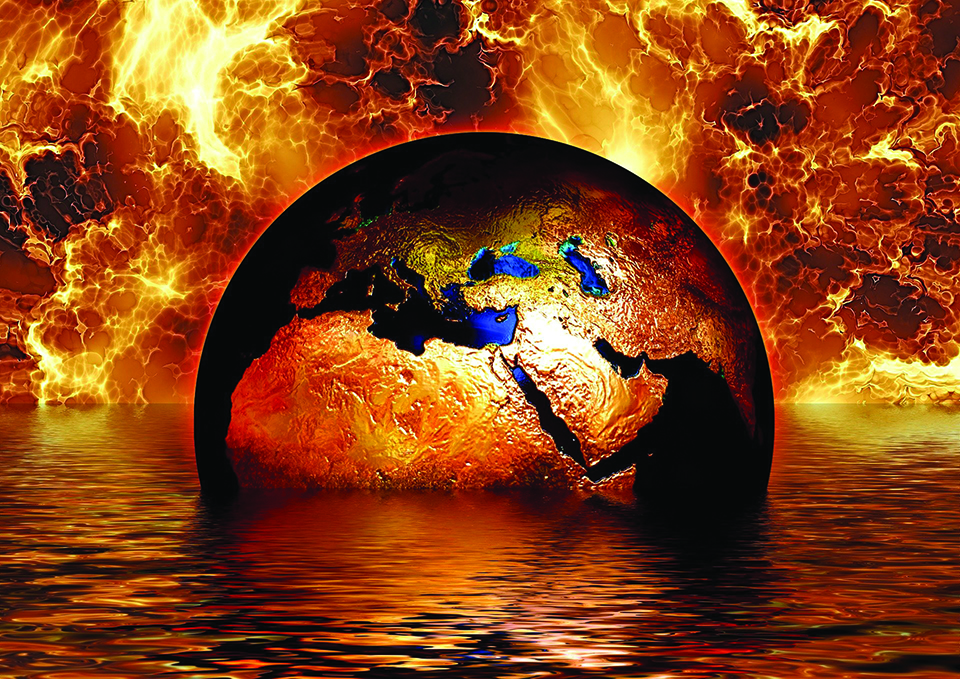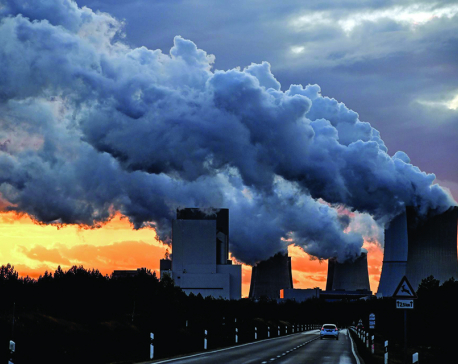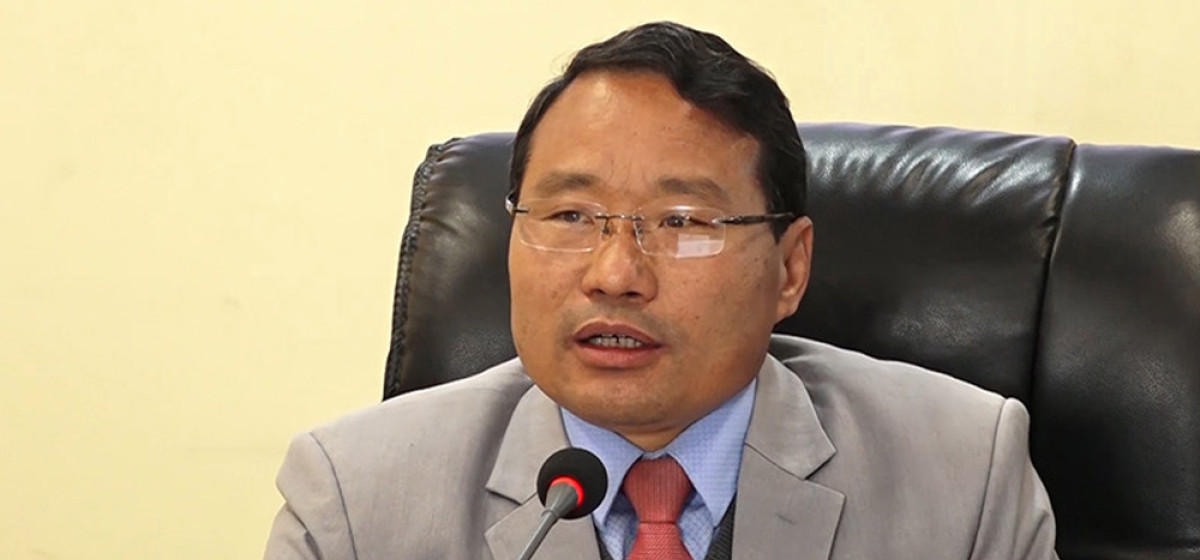
OR
#OPINION
Why is Climate Finance a Focus Area for Nepal?
Published On: November 27, 2022 05:59 PM NPT By: Hari Prasad Shrestha

More from Author
- Why Federalism has Become Risky for Nepalese Democracy
- Hunger is a Serious Problem in South Asia
- Tourism Can Be A Catalyst For Change in Karnali Province
- Nepal’s Southern Border Has Become An Open Regional Crossroads
- Opening a new gateway for Kailash Mansarovar Yatra through Nepalgunj-GunshaNagari flight
The Himalayas are warming at 0.3-0.7°C faster than the global average due to a situation called ‘Elevation Dependent Warming’. At the current course, the mountains will lose two-thirds of permanent ice. A major portion of the Himalayas lies in Nepal which faces extreme difficulties from the effects of global warming.
Climate finance aims at reducing emissions, and enhancing sinks of greenhouse gasses [1] and aims at reducing vulnerability of human and ecological systems [2] to negative climate change impacts. It refers to transfers of public resources from developed to developing countries [3], and to all financial flows relating to climate change mitigation [4] and adaptation [5].
The 21st session of the Conference of Parties [6] (COP) to the UNFCCC (Paris 2015) introduced a new era for climate finance, policies [7], and markets. It includes climate financing channeled by national, regional and international entities for climate change mitigation [4] and adaptation projects and programs.
Experts speculate that if global temperatures rise by 3.2°C, this could decrease world GDP by up to 18%. This decline could be limited to 4% if targets set in the Paris Agreement are met, since it would be less than 2 °C rise in global temperatures.
This would give rise to more frequent and severe flooding in coastal regions and it has the potential to cause damages in the trillions of dollars as well as endanger countless lives of those living in the coastal regions.
Moreover, the frequency of earthquakes, forest fires, mudslides, droughts, and other natural phenomena would alarmingly increase. Millions of people face poverty and food insecurity [8], as climate change hits crops and water supplies and threatens to disrupt trade and labor markets.
Experts say that even a 1.5°C rise in global temperature will mean heavy precipitation and associated flooding. The Himalayas are warming at 0.3-0.7°C faster than the global average [9] due to a situation called ‘Elevation Dependent Warming’. At the current course, the mountains will lose two-thirds of permanent ice. A major portion of the Himalayas lies in Nepal which faces extreme difficulties from the effects of global warming.
Melting glaciers, erratic and unpredictable weather conditions, changing rainfall patterns, and rising temperatures are impacting Nepal. Nepal has been trapped between India and China, two major pollutants of the world. Nepal has the lowest carbon emission, however, it has been highly affected by climate change. There is a high possibility that many glacial lakes in the Himalayas will burst by the effects of global warming in the near future, which would destroy life and property, in massive scales in the affected areas.
The 2022 United Nations Climate Change Conference referred to as COP27, is the 27th United Nations Climate Change conference [10] which was held from 6 November to 18 November 2022 in Sharm El Sheikh [11], Egypt [12].
The ultimate goal of the 2022 COP27 is that wealthy countries focus on ways to help the developing nations gradually eliminate fossil fuels [13] and shift to renewable energy [14]. Differences between richer, developed countries and poorer nations, the latter of which bear the brunt of climate impacts, over who should pay the costs of global warming [15], were also on the agenda of the conference.
During the meeting, many countries with rich resources of oil, gas, and coal criticized the push for a rapid move away from fossil fuels, complaining it is economically reckless and unfair to poorer and less developed nations keen for economic growth.
Moreover, as a concept, loss and damage that rich countries, having emitted the most planet-warming gasses, should pay poorer countries who are now suffering from climate disasters they did not create.
At COP27, the biggest discussion was over whether to create a dedicated financial mechanism for loss and damage – in addition to existing climate finance meant to help countries adapt to climate change and transition to clean energy.
Thirteen years ago, in 2009, at a United Nations climate summit in Copenhagen, rich nations made a significant pledge. They promised to channel US$100 billion a year to less wealthy nations by 2020, to help them adapt to climate change and mitigate further rises in temperature.
As of November 2020, development banks [16] and private finance had not reached the US$100 billion per year investment set out in the UN climate negotiations for 2020. During the COP27, Nepal voiced collectively to implement commitments made by the developed nations.
The US is the largest donor to support climate change, while Norway makes the largest contribution relative to population size. Most multilateral climate funds use a wide range of financing instruments, including grants, debt, equity and risk mitigation options.
Private investors are also considered potential sources of climate finance including commercial banks, investment companies, insurance companies and sovereign wealth funds. However, it would be not so easy to bring them into the mainstream of financing in absence of fulfilling commitments made by the developed countries.
Governments have a range of financing and funding mechanisms available to secure finance from private investors, including equity [17], debt [18], grants [19] or risk mitigation instruments such as guarantees.
A carbon tax [20] is a price set by government that companies and consumers must pay for each ton of greenhouse gas emitted. Another concept is an Emissions Trading System (ETS) which puts a market price on emissions and creates a cap on total emissions allowances while letting companies buy/sell these allowances. Reducing subsidies to oil companies is also an important way to mitigate the effects of climate change. Subsidies reduce the price of fossil fuels which encourages consumption of these fuels and in turn increases emissions.
During the COP26 held in Scotland, Nepal announced to remain cumulatively ‘net zero carbon’ from 2022-2045 and become carbon negative after that, halt deforestation and increase forest cover to 45 percent by 2030, and ensure all vulnerable people are protected from climate change by 2030.
Nepal’s commitment to strengthen its public transport network and to turn 90% of its vehicles electric by 2030, eliminating fossil fuel use and replacing it with cleaner sources would reduce greenhouse gas emissions by up to 28%. The rest comes from energy use in construction, industries, and other uses. Nepal must seriously encourage incentives to use electricity replacing gas and fuel in cooking and use in vehicles.
Based on Nepal's Climate Change Policy 2076 BS, Nepal would need a total of 47.4 billion US Dollar until 2050 to implement low-carbon resilient development (LCRD) programs. Of the total need, Nepal can barely manage 1.5 billion US dollars from its internal sources while a whopping 45.9 billion US dollars must be attracted through external sources. Within this projection, Nepal would need climate finance to the tune of Rs 26.4 billion until 2030, which means a 2.1 billion US Dollar every year.
At the COP27 meeting Nepal updated the world about its pathway to Clean Energy Transition and reiterated commitment to fulfill NDC targets. Also, it invited international investment communities to come and invest in Clean Energy developments projects in Nepal and contribute to global emission reduction.
Nepal uses grants, and occasionally loans, to finance the implementation of the programs. The government is not in favor of taking any further loans for climate change initiatives, so grants are likely to remain the dominant financial instrument in the foreseeable future.
Nepal’s emission may still be negligible but it is one of the countries most vulnerable to the impact of climate change and extreme weather events. As Nepal lacks the essential resources to implement its plans, wealthier developed nations and its two big neighbors must contribute to its support programs on reducing greenhouse gas emissions drastically.
You May Like This

On global warming
A truly global poll shows that climate change is people’s lowest priority, far behind health ... Read More...

Ozone layer recovering, but climate change is for real: UN
NEW YORK, Nov 6: The International Panel on Climate Change (IPCC) has said that more powerful hurricanes, worsening drought, melting glaciers... Read More...

With rising sea levels, Bangkok struggles to stay afloat
BANGKOK, Sept 2: As Bangkok prepares to host climate-change talks, the sprawling city of more than 10 million is itself... Read More...




Just In
- Captain Paudel scores half-century in T20 match against West Indies 'A'
- Nine youths from Tanahu allegedly joining Russian army out of family contact for months
- West Indies 'A' sets Nepal a target of 205 runs
- Parliamentary committee directs govt to provide electricity tariff subsidies to cold storage facilities
- Former DoTM employee Bhatta arrested in connection with illegal license issuance case
- One killed in a fire incident in Dadeldhura
- JSP Central Executive Committee meeting being held today to discuss national convention representative election guidelines
- KMC adjust office hours, services now start at 9AM
















Leave A Comment